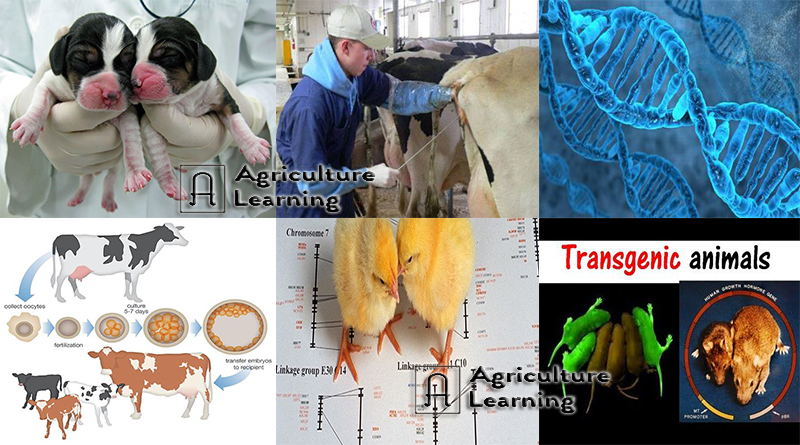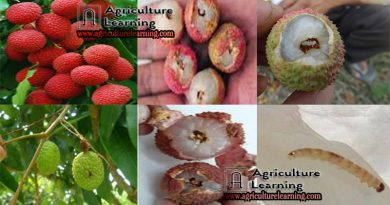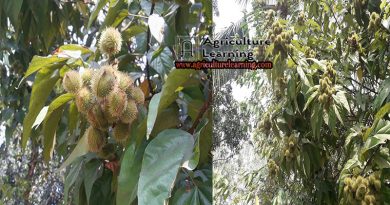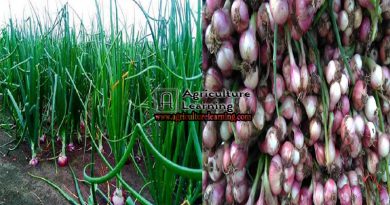Use of Novel Biotechnologies in Animal Breeding and Genetics
Introduction: The artistry and science of genetically promoted animals have developed very significantly in the last couple of years. Now days it is not so hard to generate animals in considering novel properties like meat, milk, fiber production, egg production, high fertility rate with short generation interval, environmental protection by managing animal wastage and so on. This paper will address how human being become more benefit and commercially profitable by using novel technologies in animal breeding.
Objectives: The main objectives of novel biotechnologies in animal breeding are as follows:
- Improve the production of novel animal properties like meat, milk, egg, fiber and so on.
- Improvement of genetic diversity.
- Diseases control and resistence .
- Increase selection intensity
- Maximizing the profit with low investment.
- To decrease the generation interval with maximize the litter size.
- Identification of desirable genes and successful genetic manipulation.
Source: http://www.sciencedirect.com/science/article/pii/037843209290101I
Novel Biotechnologies use in Animal Breeding:
- Artificial Insemination (AI)
- Semen or embryo sexing
- Embryo Transfer (ET)
- Animal Cloning
- Multiple Ovulation Embryo Transfer(MOET)
- Open Nucleus Breeding system (ONBS)
- Transgenic animal
- Genome editing
- Xenotransplantation
- Embryonic stem cell method
- In Vitro Technique of Maturation (IVM) or Fertilization (IVF) of ocytes.
- Genetic Marker and Marker- Assisted Selection
- Vaccine production- by using recombinant DNA technology.
Sources: http://www.fao.org/wairdocs/ilri/x5473b/x5473b05.htm
Artificial Insemination
Artificial insemination is the novel biotechnological method by which proven semen is inserted into the female reproductive tract by artificial means other than any natural mating. Among the agricultural techniques, beyond hybrid seed and fertilizer using, Artificial insemination is mostly adopted and popular technique. It has distinguished past history. The history of AI is almost two centuries old in 1677 by scientist Leeuwenhoek when he observed spermatozoa in newly invented microscope. He inspected that the sperm cell could be inactivated by cooling and also could be reactivated again. In 1900, professor Ivanov first used artificial insemination in horse in Russia. Later 1933 professor Ivanov further developed the technique of semen collection and eventually inseminated to bovine, porcine, equine, and ovine. The first artificial insemination cooperative has established in Denmark in 1933 and in 1937 in United States of America by E.J Perry who is an dairyman of New jersey. After that, the number of artificial insemination organizations has expanded very rapidly both Europe and North America. In 1949 Dr. Polge and his co-activists first used glycerol as extender media in fowl and bull sperm cell to protect during freezing process.
In general, cattle farm owners use artificial insemination in their own farm just because:
1) To achieve genetically superior sires,
2) To control and protected from venereal diseases,
3) There is no need to keep dangerous animals in farm for economic safety,
4) To establish an organized breeding management and proper record keeping.
However, in case of porcine, Artificial insemination has particularly applied to decrease the maintaining cost of boar in the production unit. In case of turkey, artificial insemination is most frequently used technique rather than natural mating just because natural mating does not happen normally.
However, in the past, the use of artificial insemination was lower in cattle (due to economic reason), in horse (due to restriction of offspring`s registration). However, fortunately changing of industrial structure, the use of AI has also changed positively. As per example, porcine industry has become rapidly growth in 1990’s by the adaptation to AI technique which reducing the maintenance cost of male pigs. In case of equine, “Quarter Horse Association” allows to registration of foal from artificial insemination (http://www.ansci.wisc.edu/jjp1/ansci_repro/lec/handouts/hd8.html).
Actually, artificial insemination is considered as most important reproductive technologies in case of breeding purpose because:
- It is simple
- It is very economical both developed and developing countries.
- It is most successful to any other techniques (http://www.sciencedirect.com/science/article/pii/S0093691X02012414)
Objectives of AI: Artificial insemination has become popular day by day from large-scale farm to small scale in every corner of the world due to particular advantages such as:
- Rapid dissemination of superior gene– By applying AI technique offspring achieves superior and desirable genes from selected good sire. As a result superior genes eventually spreads in whole herd to show up desirable characteristics like high milk production(dairy cows), less claw defect, higher wool production (sheep) and so on.
- Establish link between herds.
- Increased potentiality of genetic selection– As artificial insemination permits sires to produce more offspring whereas few sires are needed. For example, one farm owner can choose just few best sires for breeding purpose, thus increase selection intensity. As male can produce more offspring, so the genetic value of the male will be evaluated more accurately by using progeny test program whereas offspring will be used as breeding tools of this program. Furthermore a farmer can also increase the genetic pool of his or her farm and able to decrease the inbreeding effects successfully by artificial insemination.
- Increased bull usage efficiency – As we know that when natural mating occurred, a sire deposits much more of sperm cell than standard needed cells in female reproductive tract for fertilization. Furthermore, natural breeding is sometimes physically more stressful than artificial means. After collecting desirable semen, it can easily dilute and extent and make hundred doses from a single ejaculation doses. Semen can easily transport to any geographical location in the planet where it is need. Even frozen semen can store about hundred years if needed.
- Decreased disease transmission– By natural mating offspring can easily affect by several venereal diseases whereas there is no chance for transmission of sexual diseases in case of AI. Just because from the process of collection to deposition of semen into female reproductive tract. So every step should be should be checked very carefully to avoid any microbial contamination.
- Reduced cost– Sometimes male animals grow faster comparatively females and can consumed more feed than female animal. Normally males are relatively less docile, more strong or powerful. Therefore, it requires more restraining equipments and housing cost. By applying AI technique, a farmer can easily minimize his or her cost. Source: http://www-naweb.iaea.org/nafa/aph/resources/technology-ai.html
- Increase the conception rate
- Old, injured sires can also use if need. Source: http://agritech.tnau.ac.in/animal_husbandry/animhus_cattle_AI.html
Disadvantages of AI:
- Special apparatus and expert person needed to perform the action successfully.
- Comparatively require more times than natural mating.
- Success rate depends on various factor like skilled technicians, specific time of insemination, specific place of semen deposition in female reproductive tract and so on
- This process is more sensitive and sophisticated than natural mating.
Source: http://agritech.tnau.ac.in/animal_husbandry/animhus_cattle_AI.html
Artificial insemination technique in cattle:
There are three consecutive methods are mostly used for AI in cattle, which is describing bellow:
Method -1: watch the females and get them in- carefully detect the sign of estrous and should be inseminated just after twelve hours of onset of estrus. Before inseminating females are taken into squeeze chute for proper restraining.
Method-2: Preparation before insemination- prepares a water bath in between 34-35 degree Celsius in a thermos. Then identify specific canister from the tank. Then remove the specific canister from the central of tank. Then grasp the tank and remove the straw of semen within 10 seconds. Then gently shake the straw to remove excessive liquid nitrogen. Then as early as possible shifted it into the thermos water for 40 to 45 seconds. Then take the artificial insemination gun, which was preassembled ready. Then remove the semen straw from the thermal water and make it dry by wiping towel paper. After that putting the semen straw in the rod.
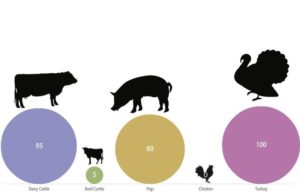 Method -3: Inseminating in the female reproductive tract- grasp the moving tail by the left forearm to avoid interface during remaining AI process. Then clean inguinal region specially vulva. After that the AI gun take off from the jacket and gently insert it into the vulva about 30 degree angle. Then inserted left hand into the rectum of the cow and gently grasp the cervix. Gently push the AI gun into the cervix and check the location by using index finger. Finally deposited the semen very smoothly and pull out the gun from the vagina. Source: http://www.wikihow.com/Artificially-Inseminate-Cows-and-Heifers
Method -3: Inseminating in the female reproductive tract- grasp the moving tail by the left forearm to avoid interface during remaining AI process. Then clean inguinal region specially vulva. After that the AI gun take off from the jacket and gently insert it into the vulva about 30 degree angle. Then inserted left hand into the rectum of the cow and gently grasp the cervix. Gently push the AI gun into the cervix and check the location by using index finger. Finally deposited the semen very smoothly and pull out the gun from the vagina. Source: http://www.wikihow.com/Artificially-Inseminate-Cows-and-Heifers
Fig: Artificial Insemination data in United States. (Source: http://freakonomics.com/2011/11/22/artificial-insemination-what-about-the-other-animals/)
Summary of cattle AI statistics with frozen semen from different countries in 2013
| Country | Number of inseminationsa | Frozen (%)b | Number of sperm inseminated | Fertility (%) | Non-return (days) |
| Austria | 915490 | 100 | 25 × 106 | 72.3 | 59 |
| Australia | 1600000 | 100 | 20 × 106 | 60 | – |
| Belgium | 581000 | 100 | 12 × 106 to 15 × 106 | 71 | 56 |
| Brazil | 2861852 | 100 | 40 × 106 | 60–70 | – |
| Canada | 1500000 | 100 | 15 × 106 | 68 | 60–90 |
| China | 10000000 | 100 | – | 70 | – |
| Denmark | 787848 | 100 | 15 × 106 | 67.8 | 56 |
| Finland | 462852 | 100 | 20 × 106 | 63.8 | 60 |
| France | 4800000 | 90 | 20 × 106 | 60 | 48 |
| Germany | 5577981 | 98 | 10 × 106 to 20 × 106 | 64.6 | 60–90 |
| Hungary | 400000 | 100 | 20 × 106 to 25 × 106 | 50 | Pregnant |
| Israel | 150000 | 100 | 20 × 106 | 55 | 59 |
| Italy | 2450000 | 100 | 18 × 106 | 63.8 | 59 |
| Japan | 2173456 | 99 | 20 × 106 | 58 | 60–90 |
| Korea | 1586000 | 94 | 30 × 106 | 71 | 59 |
| Mexico | 900000 | 95 | 35 × 106 | 40 | 59 |
| The Netherlands | 1659496 | 100 | Varies by bull | 69.4 | 56 |
| New Zealandc | 3800000 | 37 | 1 × 106 to 2 × 106 | 69 | 2–24 |
| Norway | 419137 | 100 | 18 × 106 | 70.9 | 60–90 |
| Poland | 2175840 | 100 | 20 × 106 | 70 | 60 |
| Spain | 1800000 | 95 | 30 × 106 | 65–70 | 59 |
| Sweden | 480000 | 100 | 15 × 106 | 68 | 56 |
| Switzerland | 1098000 | 100 | 20 × 106 | 68.8 | 75 |
| USA | 10466000 | 100 | 10 × 106 to 30 × 106 | 68 | 59 |
Sources: References number 8.
Embryo Transfer
Embryo transfer is a novel biotechnological technique by which embryos are collected from donor mother and transfer to the recipient mother who is act as surrogate mother in remaining gestation period. Embryo transfer technique has been applied all most all domesticated animals especially dairy cows, sheep, horse, pig, wild animals as well as in lab animal for research purpose. Embryo transfer has also evolved completely in nonsurgical procedure from last decades. Furthermore, ET has also applied in human and non-human primates. Scientist Walter Heap first developed ET in England in 1890 in rabbit. . The first embryo transfer of cow occurred in 1951. However, ET was commercially developed after 1950s when Follicular Stimulating Hormone (FSH) discovered. Here conception rate is higher (more than 60-65%) than Artificial insemination. In case of embryo transfer, three types of hormones are needed.
- a) Follicular Stimulating Hormone (FSH) – It is collected from pituitary gland of the cow which helps to for super ovulation.
- b) Prostaglandin (PG) – helps in cycle.
- c) Pregnant mare Serum Gonadotropin (PMSG) – It is collected from cow’s serum that helps in super ovulation. Source: http://www.cruachan.com.au/embryo_transfer.htm
Applications of ET:
- Genetic improvement: Genetic progress had carried out little bit slower when considered AI for genetic improvement in the herd but it became more rapid and accurate by using embryo transfer technique. However genetic gain has been promoted by decreasing general interval, increased selection intensity by transferring female offspring. For example, in case of monotocous animal (cow) produces six offspring and selection intensity would be almost twice times and of response rate to genetic selection for specific trait like milk yield, disease resistance (mastitis) , claw defect can be measured both male and female sex. Genetic improvement can be achieved upto 2.5 – 8% by using artificial insemination technique in case of dairy herd. But this genetic gain became four to ten times faster and accurate by using embryo transfer technique in herd if selected top 10% best sire ( Reuben J. 1984, nature publication group).
- 2. Planned mating: Proliferation of desirable genotypes could be considered as most common use of Embryo transfer in animal biotechnology. In case of artificial insemination only male genetic potentiality disseminated but in ET elite female’s genetic potentiality spread subsequently. Furthermore, embryo transfer also allows the genetic development of elite females either sibs whatever it is not full sibs. Embryo transfer basically promoted faster. The outstanding commercial development of embryo transfer occurred in north America by direct introduction of European breed in north America. (Reuben J. 1984, nature publication group).)
- Genetic testing of Mendelian recessive traits: Deletion of hereditary traits of genetically tested artificial inseminated sires is one of the most popular usages of embryo transfer. Because some of artificial insemination organizations or companies supply semen which has some genetic defects. However, in case of ET technique embryos are transferred to genetically unrelated recipients and successfully examinations of fetus in the presence or absence of any defects. Based on defect of heritability, however 8 -10 non-affected fetuses would be enough for the declaration that the bull is completely absence from that trait. On the other hand, the bull can mate with his 7or 8 super ovulated daughters. As a result offspring will show all recessive traits that bull carried before.( Reuben J. 1984, nature publication group).
4.Twining in cattle: In general beef production is less profitable than dairy because every cow does not gives one calf every year. But beef production should be profitable 60% more by twinning with good management in the herd. During the gestation and lactation period, beef cow utilizes nutrition 70% for her own maintenance and remaining 30% for her calf. Embryo transfer technique helps for production of twins in beef cattle for more commercial benefit by applying same cost. But in this situation the most important challenging factor is the recipient cows should be supplied extra nutrition and well management practice, especially during calving period. (Reuben J. 1984, nature publication group).)
- Disease control: Transmission of infectious disease is very common in bovine species via embryo and that causes economical loss of the farm. To check the problem it is very important to establish a bovine leukosis free dairy herd in the way so that the virus is unable transmits via embryo. This is possible to introduction of specific pathogen free new bloodlines in the embryo of the pig herds. Still embryo-virus interaction research, especially in pig, is still undergoing process and keeps it more confidential.
- Import and export business: Normally international transport cost per animal is about 1000$.But whole herd could be transferred by a simple plane fare by using embryo transfer technique as transfer of frozen embryo. Although it has some limitations due to environmental differences in temperate, tropical or subtropical regions and some license related problems. (Reuben J. 1984, nature publication group)
1. Embryo transfer tecnique http://www.cruachan.com.au/embryo_transfer.htm

Transgenic Animal: The transgenic animal is one that carries a foreign gene that has deliberately inserted into its gremlins cells. After that, it will be transmitted into the progeny. The foreign gene will be constructed by using recombinant DNA technology. The first transgenic animal was a super mouse and it was invented by Ralph Brisnter and Richard Palmiter in 1982. It was created by inserting human growth hormone gene into the mouse. As a result the transgenic mouse were bigger in size in comparison with their parents. (http://www.biology-pages.info/T/TransgenicAnimals.html). After that by using the genetic engineering technique, many animals are also genetically modified eventually like sheep, rabbit, cattle, pig and so on. Actually transgenic animal are used for two specific reason:
- For economical benefit: Mainly transgenic animal used for economic benefit. For example, transgenic cows give more milk than normal cows and it milk’s contains a special human protein that is used for treatment of emphysema disease in human being.
- For disease diagnosis and treatment : mostly mice and rabbit used as lab animal. Oncomouse or Harvard mouse carries special gene, which helps in cancer treatment. (http://www.biotecharticles.com/Genetics-Article/Applications-of-Transgenic-Animals-in-Biotechnology-143.html)
Application of transgenic animal: three basic field of application–
- Agriculture : Transgenic animal are using for breeding purpose like high yielding cows, high growth rate, less mortality rate, shorter generation interval. Transgenic cow’s milk contains less lactose or cholesterol 12, which is beneficial for human body. Recently scientists are trying to produce specific disease resistance animal. For example, influenza resistant pig.
- Human medicine: Xenotransplantation- replacement of human’s vital organ like heart, liver, kidney by animal’s organ (sheep). Blood anti-clotting factor, growth hormone, insulin has successfully receipt from the milk of cow, sheep, goat. The first transgenic cow has produced in1997 who carries special human protein enriched gene (alpha-lactalbumin) in her milk. This milk is more nutritionally balanced than normal milk. It also used in gene therapy. The A.I . Virtanen institute of Finland invented a transgenic calf who carries a special gene that helps the growth human’s red blood cell (RBC).
- Industry: In Canada , two scientist invented a goat who carries spider genes in her milk. As a result the milk contains silk which is used for making the uniform of military, medical microsutures, tennis racket strings. (Sourcehttp://www.actionbioscience.org/biotechnology/margawati.html)
Techniques used for transgenic animal: widely accepted three techniques
- DNA microinjection
- Retrovirus-mediated gene transfer
- Embryonic stem cell-mediated gene transfer.
1.DNA microinjection : the first transgenic animal (mouse ) was produced by this method. First of all a desirable gene (a single gene or combination of gene as per requirement ) is transferred from one donor species to the pronucleus of reproductive cells of recipient’s. Then cultured in vitro situation and then manipulated the cell and finally transferred to recipient female species.
- Retrovirus-Mediated Gene Transfer: Retrovirus is an RNA virus, which uses vector to carries its information into the host cells. The method first used in 1974 where mice embryos received a simian virus as a transgenic process ( Sourcehttp://www.actionbioscience.org/biotechnology/margawati.html).
- Embryonic stem cell-mediated gene transfer:
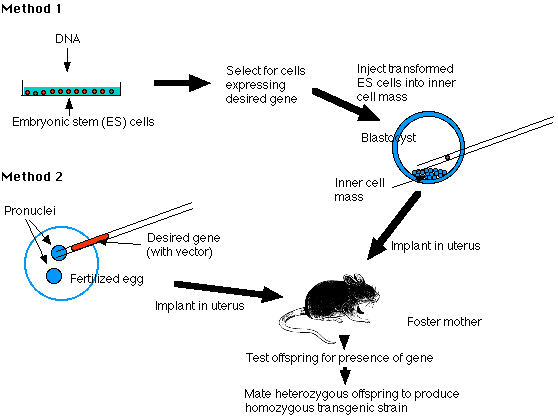
Fig: Embryonic stem cell mediated gene transfer (http://www.biology-pages.info/T/TransgenicAnimals.html)
Animal cloning: Animal cloning is the novel biotechnological process in which the whole organism is reproduced from single somatic cell transfer, which is genetically identical and carries exactly same DNA. Dolly (Sheep) was the first cloned animal which was produced on July 5th, 1996 at Scotland by the scientist Wilmut. Unfortunately, dolly died due to arthritis.
(http://novaonline.nvcc.edu/eli/evans/his135/events/dolly96/dolly_module.html)
Cloning of Dolly: dolly cloned in laboratory for research purpose. It followed five consecutive steps. First, mammary cells has taken from the six years ewe (mother of dolly) in its last trimester. Secondly, cells are cultured in a Petridis. Thirdly, rescued cells inserted into the unfertilized sheep egg (eggs thought that it is fertilized and begins of embryo production). Fourthly, eggs implanted successfully into the ewe, which is ready for pregnancy. After 148 days, dolly produced. But it is notable that scientists tried 277 times before producing dolly. http://novaonline.nvcc.edu/eli/evans/his135/events/dolly96/dolly_module.html)
Limitation: As per the direction of course (Breeding schemes and programs in plant and animal breeding ) coordinator , I have to complete my writing maximum ten pages .So, I just described only most popular biotechnological methods using in animal breeding. Other methods has to skip due to page limitation.
Conclusion: Life science is developing day by day. By the need of human being, the demand of animal products is increasing dramatically. All the developed countries using modern biotechnological method for higher production of animal’s products like meat, milk, wool, fiber and so on. However, artificial insemination technique is most popular and widely adopted in every corner of the world. Among all novel techniques, gene mapping and marker –assisted selection are mostly enable for new genetic variation by introgression of one breed to another in same species. Marker-assisted selection is potential for increasing the selection accuracy and simultaneously reducing the generation interval. Gene mapping also permits to identify and isolation of desirable genes, which can enhance the genetic manipulation programs. Embryo transfer technique may permit both of increased the selection accuracy and intensity with certain level of inbreeding in comparison with MOET and also enable for reducing generation interval in comparison with progeny testing (Wilmut, C. S. et al. 1992).
Written by Md Abu Bakar Siddik
Research fellow, Department of Animal genetics and breeding.
George-August University, Göttingen, Germany.

How useful was this post?
Click on a star to rate it!
We are sorry that this post was not useful for you!
Let us improve this post!
Thanks for your feedback!

